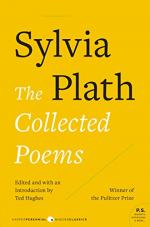|
This section contains 434 words (approx. 2 pages at 400 words per page) |

|
Tulips
The titular tulips symbolize life and vitality. The tulips, a “gift” hailing from beyond the sanitized, even bleak hospital setting, even become personified at one point as possessing an inner life of their own, in which they “breathe / Lightly, through their white swaddlings, like an awful baby. / Their redness talks to my wounds, it corresponds” (37-39). Therefore, the tulips’ interiority represent an alternative to the chosen self-negation that Plath attempts in the first half of the poem.
The inner life Plath forms with the tulips is based on “talks” and a mutual “[correspondence],” but the tulips also represent a third-person perspective of oneself. As Plath writes of the tulips, “Nobody watched me before, now I am watched,” which causes her to “see myself, flat, ridiculous, a cut-paper shadow,” eventually making Plath aware of her own heart beat (43-47). Nonetheless, the poem ends on an unresolved note...
|
This section contains 434 words (approx. 2 pages at 400 words per page) |

|




